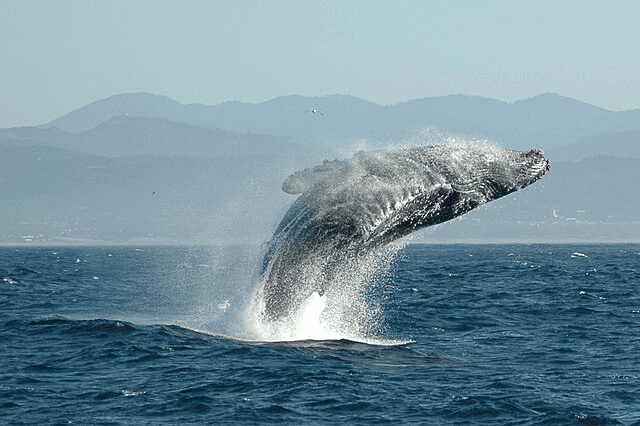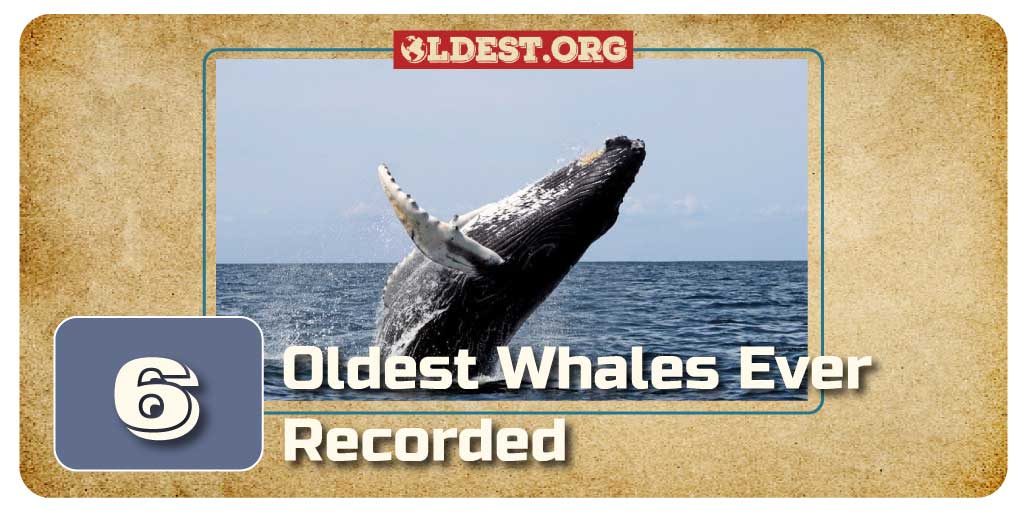Whales are the majestic giants of the deep and have long held humans in awe with their grace, power, and remarkable lifespans. In this article, we will delve into the awe-inspiring lives of the ten oldest whales ever recorded.

Sounds interesting? Let’s explore their origins, birth years, current statuses, and intriguing tidbits that celebrate their longevity while shedding light on the importance of whale conservation.
10. Old Tom
Country: Australia (Eden, New South Wales)
Born in: Late 1800s
Status: Deceased (Last seen in 1930)
Old Tom was a legendary killer whale known for his unique bond with whalers in the late 19th and early 20th centuries. Alongside his pod, the “Tommyknockers,” he helped whalers hunt baleen whales. Old Tom’s alliance with humans remains a remarkable tale.
Did You Know?
Old Tom’s interactions exemplify the intricate relationships that can exist between humans and animals, underscoring the adaptability and intelligence of orcas.
9. Granny (J2)
Country: United States (Pacific Northwest)
Born in: Estimated in the 1910s
Status: Deceased (Passed away in 2016)
Granny, or J2, was a matriarch of the Southern Resident Killer Whale population in the Pacific Northwest. Her extraordinary age, over a century, marked her as one of the oldest known orcas, a testament to her species’ endurance and strength.
Did You Know?
Granny’s legacy raised critical questions about the effects of human activity on killer whale populations and the ecological health of their habitats.
8. Elsie the Humpback
Country: Australia (Hervey Bay, Queensland)
Born in: Estimated in the 1930s
Status: Deceased (Last seen in the early 2000s)
Elsie was a celebrated humpback whale known for her annual visits to Hervey Bay during migration. Her distinctive tail fluke pattern made her easily recognizable, endearing her to researchers and whale enthusiasts alike.
Did You Know?
Humpback whales, like Elsie, undertake awe-inspiring migrations, covering thousands of miles between feeding and breeding grounds.
7. Charlie
Country: United States (Southern California)
Born in: Estimated in the 1930s
Status: Deceased (Last seen in 2020)
Charlie, a blue whale, was among the oldest documented in the region. His age exemplifies the remarkable endurance of these majestic creatures.
Did You Know?
Charlie’s advanced age highlights the urgency of protecting the habitats of blue whales, who face threats from ship strikes and underwater noise pollution.
6. Lolita (Tokitae)
Country: United States (Miami, Florida)
Born in: Estimated in the 1960s
Status: Alive
Lolita, or Tokitae, is a captive killer whale residing at the Miami Seaquarium. Captured in Puget Sound in 1970, she remains one of the oldest captive orcas globally.
Did You Know?
Lolita’s story raises questions about the ethics of keeping intelligent, social animals like orcas in captivity, sparking ongoing efforts for her retirement to a sea pen.
5. Star of the Show
Country: United States (Seattle, Washington)
Born in: Estimated in the 1960s
Status: Deceased (Last seen in 1991)
Star of the Show was a killer whale captured in the wild and held in captivity. Part of the first-ever live capture of killer whales in Puget Sound, she performed at marine parks and aquariums.
Did You Know?
Star of the Show’s life mirrors the era when capturing killer whales for the entertainment industry was common. Her capture and captivity changed public attitudes and policies regarding marine mammal capture and maintenance.
4. Tilikum
Country: United States (Orlando, Florida)
Born in: Estimated in the early 1980s
Status: Deceased (Passed away in 2017)
Tilikum was a prominent captive orca widely known for his involvement in several trainer deaths at SeaWorld Orlando. His life stimulated profound changes in how the marine park industry deals with killer whales.
Did You Know?
Tilikum’s story ignited conversations about the well-being and ethical treatment of orcas in captivity, leading to reforms in the marine park industry’s approach.
3. Echo (J42)
Country: United States (Pacific Northwest)
Born in: Early 2000s
Status: Alive
Echo, a young orca from the Southern Resident Killer Whale population, was born in the early 2000s, showcasing a unique saddle-shaped patch near her dorsal fin. Her survival into adulthood embodies ongoing conservation efforts.
Did You Know?
Echo’s survival provides hope for the imperiled Southern Resident population, facing threats such as declining salmon stocks and environmental pollution.
2. Scarlett (J50)
Country: United States (Pacific Northwest)
Born in: Estimated in 2014
Status: Deceased (Passed away in 2019)
Scarlett, or J50, was a young orca from the Southern Resident Killer Whale population. Though her life was short, her struggles brought attention to the challenges facing her endangered population.
Did You Know?
Scarlett’s story underscores the difficulties confronting endangered killer whales and the ongoing battle for survival in an evolving ecosystem.
1. The 52-Hertz Whale
Country: Unknown (Worldwide oceans)
Born in: Unknown
Status: Likely Deceased (Last detected in 2004)
The mysterious 52-Hertz Whale, dubbed the “Lonely Whale,” emitted vocalizations at an unusually high frequency, isolating it from other whales. It roamed the world’s oceans, captivating the imagination of scientists and the public.
Did You Know?
The enigma of the 52-Hertz Whale has intrigued experts and the public, spurring debates about the social dynamics of whales and the potential impact of its unique vocalizations.
Conclusion
The lives of these ten oldest whales, whether in the wild or captivity, offer profound insights into the biology, conservation, and ethical dimensions of these magnificent creatures. Each whale’s story showcases their incredible resilience, the challenges they face, and the ongoing efforts to protect and understand them in our ever-changing world. Whales, with their enduring presence and powerful stories, remain vital symbols of our shared responsibility to safeguard Earth’s magnificent oceans.











